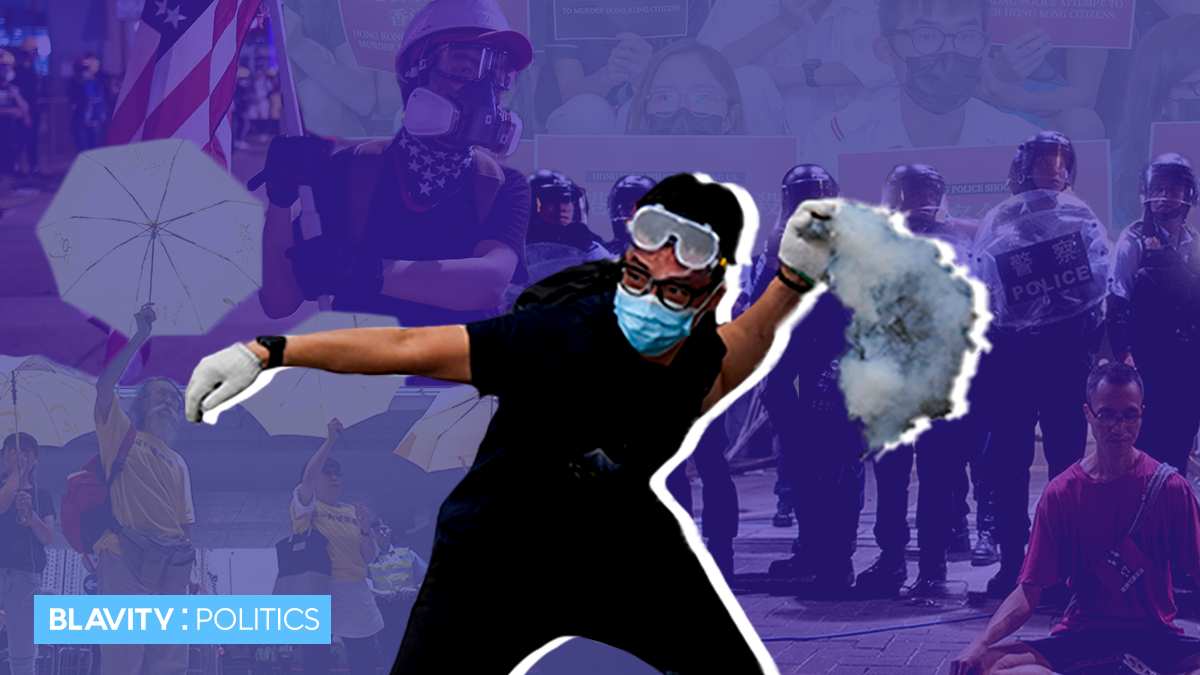The over two-month-long protest in Hong Kong, where many are demanding a greater establishment of democracy, has caused the region's economy to suffer significantly. Consumer sales are on the decline and flights to the area have experienced cancellations.
Through the uprising, international and national viewers have often questioned why it was happening, what started it, and the potential role of the United States.
1.
It all started with a piece of legislation.
The protests began on June 9, when Fugitive Offenders and Mutual Legal Assistance in Criminal Matters Legislation Bill was proposed. The amendment was considered into legislation after a pregnant woman was murdered in Taiwan in 2018. The accused fled to Hong Kong to escape persecution and due to Hong Kong’s special status laws, the accused could not be extradited to Taiwan because an extradition treaty with the country is nonexistent.
This amendment, if enacted into law, would consider on a case-by-case basis extraditing people deemed a threat to mainland China when countries, who want extradition, do not have a treaty with Hong Kong. Protestors worried the legislation would place a biased target on citizen's backs.
The bill has been dismissed by the Hong Kong Special Administrative Region government with the decision to use already established courts to execute the current extradition law.
2. Hong Kong's relationship with China is the underlying fire of these protests.
Protests have still continued due to Hong Kong’s relationship under China. Due to Britain’s colonial history of Hong Kong as the financial capital of China, the country has financially benefitted from its designation as a separate area.
Following independence, Hong Kong maintained special status within China — meaning Hong Kong is subject to its own laws separate from China’s rules. Hong Kong’s position within China has been described as a “one country, two systems” relationship. Because of its special status, many of its laws are different — including its extradition laws.
3.
Protestors are demanding a new government in Hong Kong.
Although the extradition law has been dismissed, protestors are calling for the Special Administrative Region government to be dissolved and for its Chief Executive Carrie Lam to step down. When officers, who have been accused of overusing tear gas, fire at protestors, they have responded with lasers to block out their faces, throwing bricks, and swarming around officers attempting to arrest protestors.
Majority of the violence has been between those pro-Beijing and Hong Kongers. The first breakout of violence occurred on June 12 where more than 20 people were hospitalized. Since then, the two groups have been at each other’s necks, displaying their divide with defaced property and anti-China slurs. The protestors have also torn down facial recognition lampposts that were installed in Hong Kong. The lampposts are believed to be conducting surveillance on protestors although the Chinese government has said that it is only collecting data for environmental purposes.
4.
The U.S. is igniting the fire for the protests to continue.
There has been support from nations such as the United States and Great Britain for the Hong Kong protests. U.S. Congress has backed the protests — though Trump has not spoken on it publicly. Britain's Foreign Minister Dominic Raab has launched an investigation into its former colony's protests and has expressed support for their right to take to the streets.
Although top leaders have not taken a stance publicly, these nations have much to gain economically and politically from their positioning. Even without public support, the U.S. reportedly supplied tear gas for the protests, according to CNN. Some protestors have also been seen holding up the flags of the United States and the United Kingdom.
As the United States and other nations continue to egg on the protests for its own gain, Hong Kong is joining many other regions that have been rising up and fighting for their own governed nation. With the momentum of the global disdain for the current administration, there is a long way to go before hope for the end of these protests.
